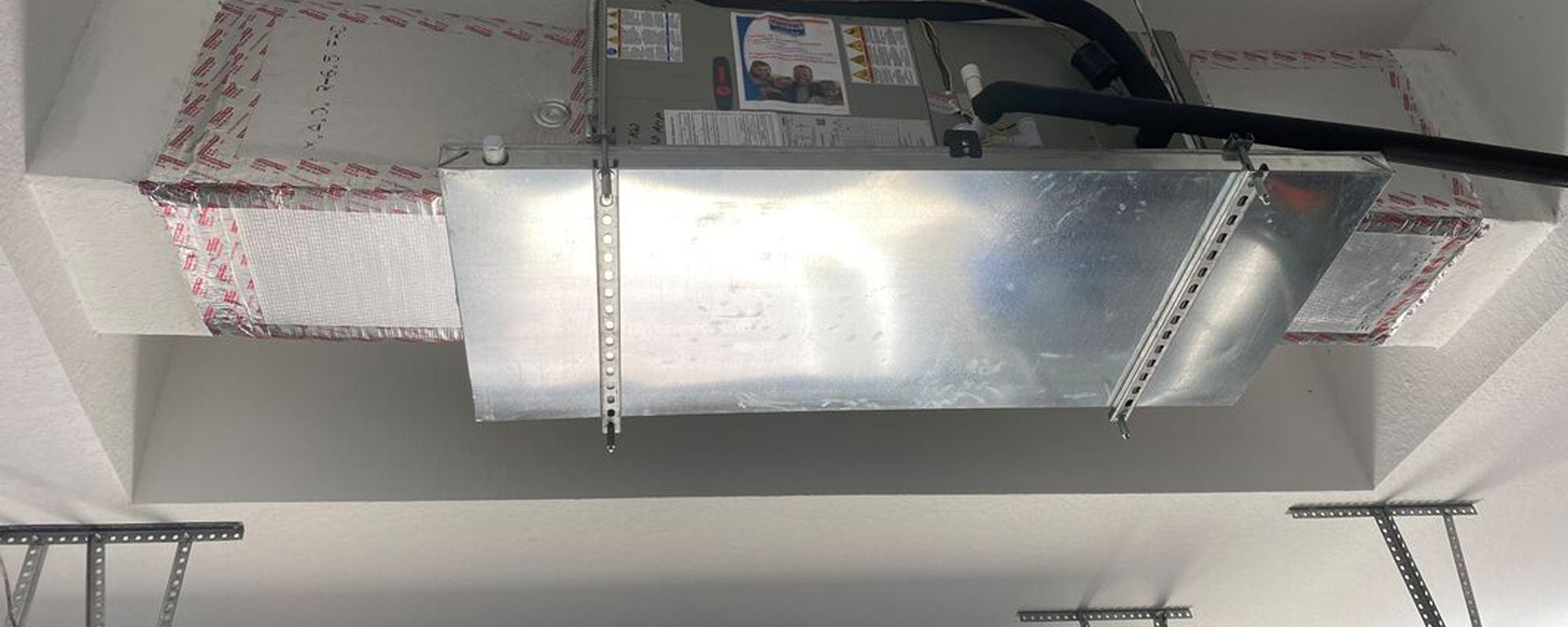Furnaces, air conditioners, and thermostats are familiar heating and cooling system components, but what is an air handler? An air handler is another component that is included in some, but not all, heating and cooling systems. Homeowners sometimes mistake their air handlers for furnaces. Although the two units share some similarities, they are not interchangeable.
Air handlers and furnaces perform some of the same functions and contain similar parts, but furnaces are used primarily for heating. If you have a furnace, you don’t require an air handler; the furnace performs the air handler functions. You need an air handler if you have a heat pump or a central air conditioner that is not paired with a furnace.
What is an air handler?
An air handler is an HVAC system component that connects to the main supply and return ducts and circulates air through the ductwork. The air handler interfaces with other parts of the heating and cooling system, such as the heat pump or air conditioner, to maintain the thermostat setting.
An air handler resembles a rectangular metal cabinet, similar to a furnace in size and shape. Air handlers are typically located indoors in the attic, basement, or utility closet.
How does an air handler work?
Air handlers are paired with heat pumps and air conditioner condensers. They contain some of the same components furnaces use to circulate and condition the air, such as a fan and a filter. Air handlers also include the cooling system’s evaporator coil and, in some instances, heating coil.
Indoor air enters the air handler from the central return duct. Some air handlers contain compartments where the indoor air mixes with outdoor air. Next, the air passes through a filter to remove contaminants before moving through the air handler’s components. Then, the air passes through the evaporator coil to be cooled or the heating coil to be warmed. After the air is conditioned, the blower motor and fan push the air into the central supply duct to be distributed to the house.
Parts of an Air Handler
Every air handler contains an evaporator coil, a blower motor, and an air filter. Some air handlers also include a heating coil and other optional components.
Types of Air Handlers
Air handlers come in different sizes and designs. Three air handler designs are multi-positional, wall-mounted, and ceiling-mounted.
Multi-positional Air Handlers
The multi-positional air handler is conventional and can be installed in various configurations. These air handlers can be installed vertically for upflow or downflow and horizontally for right-flow or left-flow.
Wall Mounted Air Handlers
A wall-mounted air handler can be mounted on a wall or wall studs. They are shorter and wider than multi-positional handlers and fit well in tight spaces like a utility closet.
Ceiling Mounted Air Handlers
Ceiling-mounted air handlers are installed above ceilings. They are significantly smaller than wall-mounted air handlers and are helpful when space is limited. Ceiling-mounted air handlers are installed in homes without ductwork.
Air Handler vs. Furnace
Air handlers and furnaces have some components in common, but air handlers lack the elements required to generate heat, such as burners and heat exchangers. Homes with furnaces do not require separate air handlers because furnaces circulate the air through HVAC systems.
Air Handler vs. Air Conditioner
Air handlers and air conditioners are two separate units that work together. The home’s warm air enters the air handler, flows through the filter, and across the evaporator coils to remove heat and humidity, and the fan blows the conditioned air into the ducts.
The outdoor condenser, another air conditioning component, expels the heat the evaporator coils absorb from the home’s air in the air handler.
Conclusion
An air handler is an HVAC system component primarily responsible for circulating air through a home’s ductwork. The filter, blower, and fan are air handler parts that assist in air circulation. Air handlers also work with air conditioners, and heat pumps to remove heat from, or transfer heat to, the air via the evaporator coils. Some air handlers contain an additional heating coil for supplemental heat. Homes with furnaces don’t require separate air handlers because furnaces include filters, blowers, and fans to circulate air through the ductwork.
Frequently Asked Questions
Is an air handler a heat pump?
Air handlers are not heat pumps but are paired with heat pumps. The air handler is the indoor component containing the evaporator coils. The coils remove heat from, or transfer heat to, the home’s air depending on the heat pump’s mode. The air handler circulates the air through the ductwork.
Can an air handler be outside?
Air handlers are always installed inside houses. However, packaged units containing all the heating, cooling, and air-circulating components in one cabinet are installed outside.
Do you need an air handler?
An air handler is not needed in a conventional furnace and air conditioning system because the furnace performs the air handler’s tasks. Air handlers are necessary for homes with heat pumps or central air conditioning with no furnace.
Can an air handler be in crawl space?
Air handlers can be installed in crawl spaces if they are correctly installed. There must be enough space to conduct maintenance and repairs, the unit should be level and firmly supported, and condensation from the unit should be directed toward the drain.







